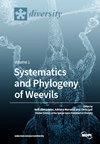夏威夷珊瑚组合的分子制图
IF 2.1
3区 生物学
Q2 BIODIVERSITY CONSERVATION
引用次数: 0
摘要
由于过度捕捞、人为污染和海洋酸化等多种因素,珊瑚礁正在减少。近几十年来,影响珊瑚的疾病有所增加,但几乎所有疾病的病因仍然知之甚少。在这里,我们研究了夏威夷岛东南部Wai ' ōpae潮汐池珊瑚组合景观中健康和患病珊瑚组织样本的三维分子和微生物。结合分子网络工具,使用3D分子制图平台来表征健康珊瑚组织和受疾病生长异常(GA)影响的组织。健康黄斑蒙pora和受ga影响的蒙tipora capitata珊瑚组织中微生物多样性高于无纹蒙porite lobata和受ga影响的蒙tipora capitata珊瑚。在赤霉病灶中,叶绿素含量降低,叶绿素和甾醇的相对丰度增加。相反,健康的珊瑚组织的特点是,除了相对较高的叶绿素水平外,还存在层叠菌的蓝藻。利用创新的分子制图技术,可以深入了解珊瑚群落的分子特征,并有助于更好地了解疾病如何影响珊瑚的分子景观。本文章由计算机程序翻译,如有差异,请以英文原文为准。
Molecular Cartography of a Hawaiian Coral Assemblage
Coral reefs are declining due to multiple factors including overfishing, anthropogenic pollution, and ocean acidification. Diseases affecting corals have increased in recent decades, yet the etiology of nearly all diseases remains poorly understood. Here, we investigated three-dimensionally mapped molecules and microbes from healthy and diseased coral tissue sampled across the landscape of a coral assemblage at the Wai‘ōpae tide pools, Southeast Hawai‘i Island. A 3D molecular cartographic platform was used in combination with molecular networking tools to characterize healthy coral tissue and tissue affected by the disease growth anomaly (GA). Tissues of healthy Montipora flabellata and Montipora capitata exhibited higher microbial diversity compared to Porites lobata and GA-affected M. capitata corals. Increases in relative abundance of Ulvophyceae and sterols were observed in GA lesions, while chlorophyll decreased. Conversely, healthy coral tissues were characterized by the presence of cyanobacteria in the order of Stramenopiles, in addition to higher relative chlorophyll levels. Leveraging innovative molecular cartography provides new insight into molecular characteristics of coral colonies, and helps to better understand how diseases affect the molecular landscape of corals.
求助全文
通过发布文献求助,成功后即可免费获取论文全文。
去求助
来源期刊

Diversity-Basel
Environmental Science-Ecological Modeling
CiteScore
3.40
自引率
12.50%
发文量
925
审稿时长
11 weeks
期刊介绍:
Diversity (ISSN 1424-2818) is an international and interdisciplinary journal of science concerning diversity concept and application, diversity assessment and diversity preservation. It is focused on organismic and molecular diversity. It publishes reviews, regular research papers and short notes in the regular issues. Related news and announcements are also published. Our aim is to encourage scientists to publish their experimental and theoretical results in as much detail as possible. Therefore, there is no restriction on the length of the papers. Full experimental details must be provided so that the results can be reproduced.
 求助内容:
求助内容: 应助结果提醒方式:
应助结果提醒方式:


